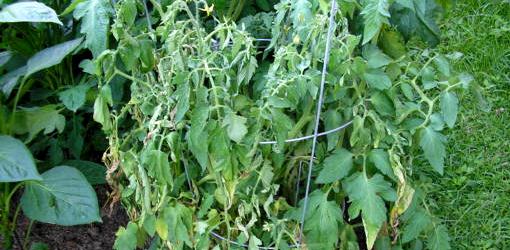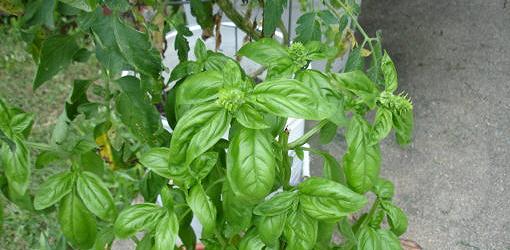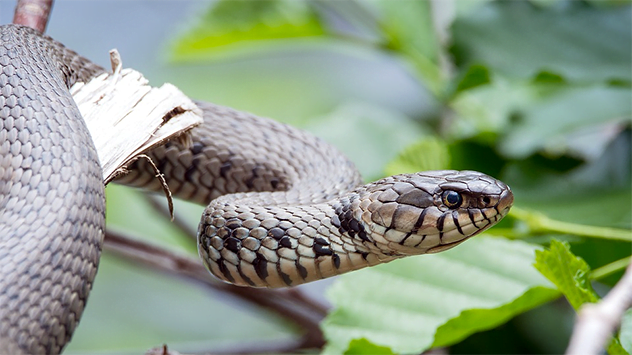Perennial plants are the backbone of gardens, offering beauty and reliability year after year, but did you know that dividing these steadfast plants can lead to a more vibrant and expansive garden? Dividing perennials is a time-honored gardening technique that refreshes existing plants and allows gardeners to expand their collections without spending a dime. This article guides homeowners through the process of dividing perennials, explaining why it’s beneficial, how to do it properly, and which plants can be divided.
Why Divide Perennials?
Dividing perennials splits an established plant into multiple pieces to create new plants. There are a few reasons gardeners divide perennials:
- Rejuvenate existing plants: Over time, perennials can become overcrowded, leading to reduced vigor and fewer blooms. Dividing these plants helps reinvigorate them by giving each section more space to grow and access nutrients.
- Control plant size: Some perennials spread rapidly and can overtake a garden bed. Regular division helps keep these enthusiastic growers in check.
- Increase plant numbers: Division is an excellent way to multiply plants and expand the garden without significant additional costs.
When Do You Divide Perennials?
Timing is everything if you want to successfully divide perennials. Generally, the best time to divide plants is when they’re not in bloom, allowing them to focus energy on root development rather than flower production. Replant spring bloomers before the ground freezes and replant fall bloomers at least six weeks before hot weather arrives.
According to the Clemson Cooperative Extension, you should divide your perennials on a cloudy day with light rain in the forecast. Avoid division on a hot day when the sun could damage vulnerable, exposed roots, causing stress to the plant.
Plan to divide your perennial plants every three to five years. Some fast-growing species may need attention every one to two years. Gardeners can tell if their perennial needs dividing if the plant has smaller-than-normal flowers, the clump centers are dead, or the bottom foliage is sparse.
How Can You Divide Perennial Plants?
Dividing perennials varies slightly depending on the plant’s root system. You’ll first excavate the parent plant from the ground for all plants. Dig around each side of the plant with a garden fork, careful not to use excessive force. Pry the entire root ball from the bottom, shaking away clumps of soil and debris.
Next, you can follow this table to determine how to divide the perennial plant based on its root system.
| Root Type | Characteristics | Division Process |
| Spreading | Thin, numerous roots that mat together, sometimes overcrowding their centers. The most common perennial root system. | Divide spreading root systems by pulling, prying, or cutting them apart. |
| Clumping | One central root clump with fleshy growths. | Divide them by cutting the main section with a sharp knife. |
| Rhizomes | Horizontal underground stems that produce roots and plant growths. | Remove old rhizome sections to improve the plant’s health. Create new divisions by removing a portion of the rhizome but leaving a few inches for the parent plant. |
| Tuberous | Thick root sections called tubers store nutrients underground. | Cut tuberous roots into quarters, ensuring each division has a growth bud and piece of the original stem. |
What 20 Perennials Can You Divide?
Many types of perennials benefit from division. Here are 20 common perennials that respond well to this practice.
Daylilies

Daylilies (Hemerocallis) are hardy, adaptable perennials that produce grassy foliage and bold flowers.
Divide daylilies every three to five years in late summer after their final bloom. However, keep in mind that some varieties rebloom in late fall and will require later dividing as a result. Their clumping root system makes them relatively easy to separate.
Hostas

Hostas are low-maintenance foliage plants with bold, ornamental leaves. Their broad, supple greenery comes in green, teal, yellow, and variegated varieties.
These shade-loving plants have clumping root systems. Divide them every few years in early spring or fall. Use a sharp knife to cut through the center of the plant to take a root wedge. Avoid dividing hostas too often, as frequent division can inhibit growth.
Peonies

Peonies (Paeonia) are lovely summer bloomers known for their stunning pink blooms. These beauties are quite hardy and need little care to thrive.
While they don’t require frequent division, gardeners can still divide them to increase their collection. Each section should have at least three to five “eyes,” or growing points. Place your peony divisions about an inch into the soil to start new plants.
Asters

Asters are late summer bloomers that produce daisy-like flowers in yellow, purple, and white hues.
Asters can spread aggressively, so division every one to two years in spring helps control their growth and rejuvenate the plant. Depending on the species, you may need to use a method suited for spreading roots or rhizomes. Replant the fresh outer growths and throw away the old center from the parent.
Bearded Iris

Bearded irises are hardy ornamentals that enhance a garden with bold, impressive blooms in a variety of colors. They’re the perfect landing pads for pollinators.
Bearded irises grow from rhizomes and benefit from division every three to four years. Divide these plants in late summer or early fall after they’ve finished blooming to encourage healthy growth and prevent overspreading.
Sedums

Sedums, or stonecrops, are succulent perennials that grow in various shapes and sizes. Their fleshy stems and leaves store water, making them drought-resistant and heat-tolerant. Autumn Joy sedums are a popular variety known for their thick leaves and large flower heads that bloom throughout the fall.
These plants rarely need division, but dividing them every few years can revive plants with dying centers. Divide sedums in early spring by separating clumps with your hands or a garden fork.
Astilbe

Astilbes are shade-loving perennials with feathery plumes of colorful flowers.
These plants have fast-growing root systems that can overcrowd the parent plant. Plan to divide them every two to three years in early spring or fall.
Geraniums

Geraniums, or cranesbills, are hardy, stunning ornamentals that produce flowers in lavender, white, red, pink, and purple shades.
They can be divided every two to four years in the spring or fall to maintain vigor. Dig up the entire root ball and separate it into new sections, each with roots and foliage.
Bee Balm

Bee balm (Monarda) is an edible perennial and ornamental flower with bushy green foliage and spiky pink, red, purple, and white summer blooms. The flowers have a heady fragrance popular amongst pollinators and tea lovers.
Bee balm spreads quickly and benefits from division every three years in the spring to prevent overcrowding and reduce the risk of powdery mildew.
Bleeding Hearts

Bleeding hearts (Dicentra) are unique spring-blooming perennials that sprout dangling heart-shaped flowers in various pink shades.
These need less frequent division than many perennials. Divide these delicate plants every five years in early spring, taking care not to damage their fragile root systems.
Coreopsis

Coreopsis is a low-maintenance plant with yellow flowers. It’s tolerant to heat, drought, humidity, and pests, but they tend to die back after a few seasons due to their rapid flowering.
Coreopsis benefits from division every two to three years. Discard any weak or woody root sections.
Lamb’s Ears

Lamb’s ears (Stachys byzantina) are an herbaceous perennial known for its thick, velvety soft leaves. The NC State Extension recommends planting lamb’s ears in a sensory or children’s garden to provide visitors with some fuzzy, comforting foliage.
Lamb’s ears have a spreading habit that can lead to overcrowding and dense, matted roots. Divide them every few years in spring or early fall and improve future growth by throwing away weak centers.
Coneflowers

Coneflowers get their scientific name, Echinacea, from the Greek word for hedgehog because of its spiky brown center. They bloom in lovely purple shades.
They don’t require frequent division, but splitting them every three to four years can improve their health. Divide these plants in spring or fall by separating the spreading root system into sections.
Black-Eyed Susans

Black-eyed Susan (Rudbeckia hirta) is a popular perennial known for its gold petals and dark, round center. These lovely wildflowers grow from a mound of dark green foliage that sprouts numerous blossoms.
Divide Black-eyed Susans every three to four years in early spring to prevent overcrowding.
Chrysanthemums

Chrysanthemums, lovingly known as “mums,” are among the most popular fall flowers in the United States. Garden mums, in particular, are hardy perennials that grow back year after year with proper care.
After multiple seasons, mums may start to overcrowd and grow fewer, weaker flowers. Divide these perennials every two years.
Yarrow

Yarrow’s scientific name is Achillea millefolium, after the Greek legend Achilles. It’s said that he used the plant’s medicinal qualities to heal wounded warriors. The plant is known for its flower heads of tiny, delicate blossoms.
Yarrow can become weedy if not managed properly. Divide these plants every two years in spring or fall or when the center begins to die out. Choose a sterile variety to prevent overcrowding.
Blanket Flowers

Blanket flowers (Gaillardia) are short-lived perennials resembling sunflowers. They range in color from fiery orange to blood red.
Blanket flowers benefit from division every one or two years. Replant them in the spring in time for their early summer bloom.
Garden Phlox

Garden phlox (Phlox paniculata) features vibrant blossoms in loose clusters of stunning blue, purple, and pink shades atop bright green foliage.
Divide them every three to four years in the spring or fall. Split tall varieties more frequently to prevent overcrowding.
Bellflower

Bellflowers (Campanula rotundifolia) are herbaceous perennials that often produce lovely, cuplike flowers in a variety of colors, shapes, and heights. One popular variety is the bluebell, known for its light blue hue and delicate bell-like flower shape.
Divide bellflowers every few years when they show signs of drying or overcrowding.
Ornamental Grasses

Ornamental grasses typically survive two or more years in the right conditions, and many varieties have spreading habits that make them excellent for landscape design.
Divide ornamental grasses’ dense, fibrous root systems every three or four years with a sharp knife or saw. Make divisions in the spring, giving the plants time to develop root systems before summer. Avoid fall splits that leave young cuttings susceptible to freezing temperatures.
Tips for Successful Division
Dividing perennials is generally straightforward, but these additional tips can produce the best results:
- Work in the early morning or late afternoon to avoid the harshest sunlight.
- Always use clean and sharp tools to minimize plant stress and disease.
- Add compost to the new planting site to enrich the soil before replanting.
- Water newly divided plants consistently, especially during dry spells, to help them establish.
- Pay special attention to perennials with unique growth habits or needs, such as Cupid’s Dart, which has easy-to-break roots.








